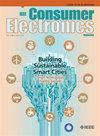Primary-Ambient Extraction Using Ambient Phase Estimate Under Joint Sparsity and Independence Constraints for Stereo Signals
IF 10.9
2区 计算机科学
Q1 ENGINEERING, ELECTRICAL & ELECTRONIC
引用次数: 0
Abstract
Primary-ambient extraction (PAE) is a technique to enhance the user listening experience in spatial audio reproduction. This is achieved by extracting the primary and ambient components from the sound scene. The PAE approach of ambient phase estimation with a sparsity constraint (APES) leverages the magnitude consistency of ambient components and the sparsity of the primary components to refine the PAE performance. This approach demonstrates an improved extraction accuracy when the ambient component is relatively strong. However, APES suffers from severe extraction errors when the primary amplitudes are equal in two channels of a stereo signal, which is a common sound scene in stereo signals. In this paper, the limitations of APES are analyzed, and a novel ambient phase estimation method is proposed under the joint constraints of sparsity and independence, called APESI. This method uses the independence between the primary component and the ambient component to correct the ambient phase estimation condition. Both objective and subjective experimental results demonstrate that the proposed APESI outperforms the APES and other traditional approaches in terms of extraction accuracy and ambient spatial accuracy, especially when the primary amplitudes are equal.联合稀疏性和独立性约束下基于环境相位估计的立体信号初级环境提取
原生环境提取(PAE)是一种在空间音频再现中提高用户听音体验的技术。这是通过从声音场景中提取主要和环境组件来实现的。基于稀疏性约束的PAE环境相位估计方法利用环境分量的大小一致性和主分量的稀疏性来改进PAE性能。当环境成分相对较强时,该方法的提取精度得到了提高。然而,当一个立体声信号的两个声道的初级幅值相等时,ape存在严重的提取误差,这是立体声信号中常见的声音场景。本文分析了APES算法的局限性,提出了一种基于稀疏性和独立性联合约束的环境相位估计方法APESI。该方法利用主分量与环境分量之间的独立性来修正环境相位估计条件。客观和主观实验结果均表明,该方法在提取精度和环境空间精度方面优于传统方法,特别是在主幅值相等的情况下。
本文章由计算机程序翻译,如有差异,请以英文原文为准。
求助全文
约1分钟内获得全文
求助全文
来源期刊
CiteScore
7.70
自引率
9.30%
发文量
59
审稿时长
3.3 months
期刊介绍:
The main focus for the IEEE Transactions on Consumer Electronics is the engineering and research aspects of the theory, design, construction, manufacture or end use of mass market electronics, systems, software and services for consumers.

 求助内容:
求助内容: 应助结果提醒方式:
应助结果提醒方式:


